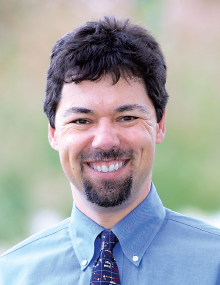High Mortality Rate Found in Youth Newly Diagnosed With Psychosis
Abstract
Psychiatrists know that young patients with psychosis entering adulthood are particularly vulnerable. A new study shows just how serious a risk they face.
Young people experiencing first-episode psychosis (FEP) are 24 times more likely to die within the year of diagnosis than their age-matched peers, reported a study published April 6 in Schizophrenia Bulletin. The findings highlight the importance of intensive clinical intervention at the early stages of psychotic illness and the need for widely available coordinated specialty care programs.

NIMH’s Michael Schoenbaum, Ph.D., hopes this study’s findings will alert mental health professionals to improve the follow-up care of young patients with psychosis.
“We expected to see the elevated mortality from previous research, but none of that prepared us for the excess mortality on the scale we observed,” said Michael Schoenbaum, Ph.D., lead author and senior advisor for mental health services, epidemiology, and economics at the National Institute of Mental Health (NIMH).
The unusually high 12-month death rate in youth with FEP—1,968 per 100,000—should be a “wake-up call,” Schoenbaum told Psychiatric News. In the general population, only people over 70 years old have 12-month mortality approaching the rates observed among patients with psychosis in this study.
“Right now, we’re a long way from providing meaningful and effective care. Here is one particular catastrophic result of what happens when patients fall through the cracks,” he said. “We need to invest heavily in establishing and maintaining a close therapeutic relationship with the psychosis patient.”
Furthermore, the health care system is failing these patients, said William T. Carpenter, Jr., M.D., a professor of psychiatry and pharmacology at the University of Maryland School of Medicine and editor-in-chief of Schizophrenia Bulletin. “These data substantiate the human cost of a health care system that doesn’t implement evidence-based care for people with psychotic disorders.” Carpenter was not directly involved with the study.
Schoenbaum and colleagues used health care insurance claims data from the Multi-Payer Claims Database (MPCD) to assess the 12-month health outcomes in a group of 5,488 insured young adults aged 16 to 30 years who received a diagnosis of FEP. MPCD links to information from the Social Security Administration’s full Death Master File, allowing documentation associated with all-cause mortality associated with FEP.
“It’s rare to be able to look at mortality in population health data. We happen to have access to a population-based data set that contains health information linked to information on mortality,” Schoenbaum said. The data, however, did not tell the researchers how these young people died.
Given the high death rates, the team expected that patients with FEP would have received more care. However, that’s not what they found. A total of 61 percent of the patients studied did not fill any antipsychotic prescriptions, and 41 percent did not receive psychotherapy in the year following FEP diagnosis.
“On the one hand, it’s encouraging that many did receive some psychotherapy, which has been declining in the United States, but it’s surprising that so few received antipsychotic medication,” Schoenbaum said. He added that detailed clinical information would be needed to determine whether the kind of treatment these patients received was appropriate or effective.
Overall, 69 percent of the youth with FEP had at least one visit with a mental health specialty provider for medication management, psychotherapy, or both over the 12-month period. These individuals had about one outpatient contact per month. Among those using hospital services, 23 percent were hospitalized in the year after the initial diagnosis. More than half of these individuals had at least one visit to the emergency department in the year following the diagnosis.
Although several countries have implemented comprehensive treatment programs for young FEP patients, including lower-dose antipsychotic medication, psychotherapy, family education, and support services, the United States has been slow to adopt early intervention, according to Schoenbaum. “People in these countries that have national health systems are less likely to fall through the cracks because they are treated by the same system throughout their lives,” Schoenbaum said.
“Other studies have shown that early coordinated treatment for psychosis produces the best results. However, we know that the typical duration of untreated psychosis in the United States is around 17 months,” Robert Heinssen, Ph.D., director of the Division of Intervention Services at NIMH and co-author on the paper, said in a press release. “This study reinforces federal and state support for funding evidence-based psychosis treatment programs across the country, and the need for communities to invest in more treatment programs.”
The study was funded by NIMH. ■
An abstract of “Twelve-Month Health Care Use and Mortality in Commercially Insured Young People With Incident Psychosis in the United States” can be accessed here.



